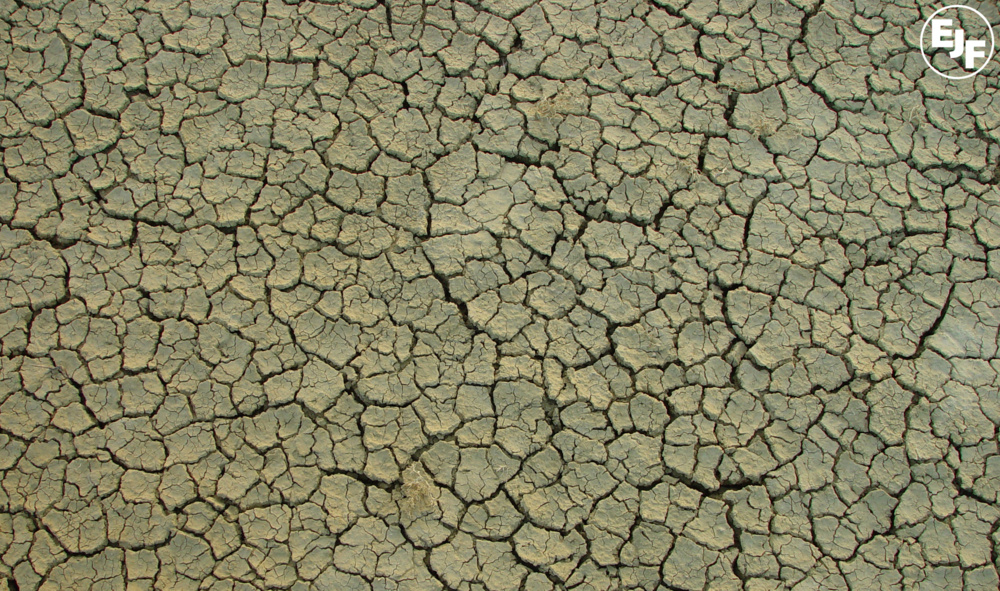
Climate Alert: March 2012
Scientific data indicates that extreme weather events such as flooding, storms and heat waves are becoming more intense. Larger areas are being affected by more frequent and
longer-lasting droughts and increasingly severe desertification. The impacts of these disasters, whether they occur rapidly or take months or years to manifest, can be devastating to
the people they affect. In particular, those disasters which touch the lives of the world’s poorest people, who often have made the least contribution to climate change through their
greenhouse gas (GHG) emissions, serve as an urgent reminder of the need for action to protect and assist those affected, and of our collective responsibility to reduce GHG
emissions.
Drought to return to East Africa
Only weeks ago, the UN declared the Somali famine to be over. But now the Intergovernmental Authority on Development (IGAD) Climate Prediction and Applications Centre (ICPAC) has announced that drought is likely to return to Somalia and other parts of the Horn of Africa over the next three months.
“There is a high probability of drought returning to the Greater Horn of Africa...Poor rains are a definite in all of Somalia, Djibouti, northern Kenya, southern, eastern and north- eastern Ethiopia,”
said Laban Ogallo, director of the ICPAC, which provides forecasts for the region. The prevailing drought conditions have been attributed to high temperatures and low rains as a result of La Niña conditions.
La Niña events are an oceanic-atmospheric phenomenon characterized by cooler-than-normal water temperatures in the Equatorial Pacific Ocean. The atmospheric pressure differences increase the intensity of westerly winds over the Indian Ocean, pulling moisture away from East Africa toward Indonesia and Australia.
Tornadoes in the Midwest US
A wave of tornadoes hit the Midwest on Friday 2nd March only days after a powerful storm system had spawned a number of tornadoes killing 13 people. Forecasters at the National Weather Service's storm prediction centre had given its highest risk warning that day but by 10pm on Friday, the weather service had issued 269 tornado warnings. Only 189 warnings were issued in all of February.
As well the loss of at least 39 lives across five states, the tornadoes caused extensive property damage. Kentucky Governor, Steve Beshear, has said that damage costs amount to at least $5.8 million. In an interview with the Washington Post, one man told how he had lost his home twice to tornadoes within the space of 10 months. “I kind of expected there to be more storms again this year, but you never expect it to hit the same place twice,” he said.
Tropical cyclones hit Madagascar
Tropical cyclone Irina killed 65 people and left more than 73,000 people homeless when it hit Madagascar on 26th February. It followed an earlier cyclone, Giovanna, which killed 35 people and left 240,000 homeless when it struck twelve days before.
"By the time the [administrator of the district] came to warn us about [Cyclone Giovanna], it was already here. All we could do was run to the church for cover," said one resident in Brickaville where 70% of homes were damaged by the storm. Ranirisoa Andriamandrindra, a local education official in Vatomandry, said there was a total of 774 classrooms in the area and so far he had counted 275 that had been destroyed, and 107 that had been damaged. He told IRIN: "We don't have a budget for reconstruction at all.”
Flooding in Kazakhstan
On 18th-20th February, quick melting of snow and rainfall resulted in floods in South Kazakhstan. Flood waters inundated 26 settlements in 7 districts and suburbs of the regional centre city of Shymkent, affecting more than 9,400 people. According to Askar Myrzakhmetov, provincial governor of the affected region, there has not been flooding of this intensity since 1956. Climate-related disasters are happening every day and they have a profound human impact on those they affect. These updates give you the stories that aren’t always being heard.
Each year, millions of people are forced from their homes and land by climate-related, natural disasters. Some of these people are displaced by sudden onset storms and flooding, others by longer-term hazards like drought and desertification. Most are from the world’s poorest and most vulnerable countries. Many face an uncertain future, with nowhere to go and no means to survive.
EJF works to raise awareness, and improve the well-being and welfare of these climate refugees. We campaign for a new, legally-binding instrument for their legal recognition, protection and assistance. EJF believes there are lots of ways that we can make a positive difference to help prevent the worst case scenarios of climate change. This can start with the choices and actions you make in your home and at work.
SIGN UP FOR OUR EMAILS AND STAY UP TO DATE WITH EJF